The Sensational Single Cell
RETIRED BETA VERSION - For current versions of the SciGen materials, please visit serpmedia.org/scigen
Yeast Lab
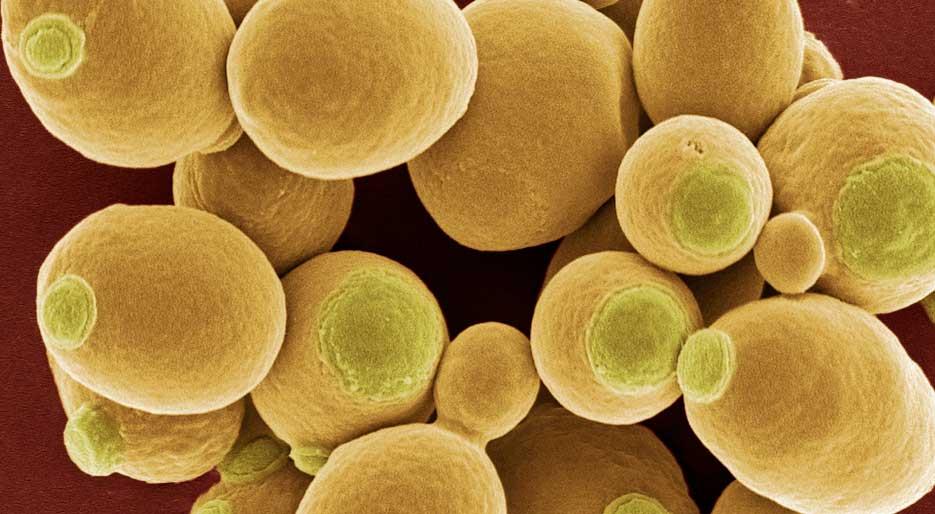
Lab Activity #1: A Closer Look
Your classroom may have various kinds of microscopes to use. There are traditional optical microscopes, digital microscopes, and attachments that can turn the camera in a phone or tablet into a microscope.Your teacher may also be able to provide you with a Foldscope. A Foldscope is a low-cost, easy-to-assemble microscope made mostly out of paper parts, designed at Stanford University for use around the world to look at the natural world and to help keep local communities healthy. Some designs of the Foldscope can also be used with a phone or tablet camera to take pictures or video.Your teacher may have you observe yeast cells under a microscope as an independent activity, or in combination with the balloon activity described below.
Materials (one per student)
- microscope or Foldscope
- 1 packet of active dry yeast
- 30 mL sugar
- 250 mL warm water (105º F – 115º F, or 40.5º C – 46º C)
- blank paper
- sharp pencil
- clean eraser
Procedure
- Open your lab notebook or this template in Google docs to take notes.
- Activate the baker’s yeast by putting it in warm water. Add some sugar.
- Observe a drop of the water under a microscope.
- Describe what you observe through the microscope.
- Draw a simple sketch.
- Let the yeast sit overnight. Return the sample to the microscope and look at it again. Are there more cells now?
Lab Activity #2: Yeast Makes Waste
In this activity, you will add yeast and sugar to a bottle with warm water in it. You will cover the mouth of the bottle with a balloon to calculate the volume of carbon dioxide produced by the yeast.
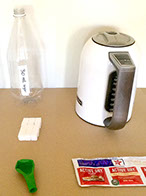 Materials:
Materials:
- 1 packet of active dry yeast
- 30 mL sugar (or 15 sugar cubes)
- 250 mL warm water (105º F – 115º F, or 40.5º C – 46º C)
- An empty, 1-liter plastic bottle
- A funnel (not necessary, but helpful)
- A balloon
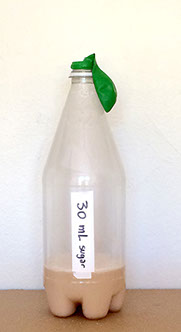 Procedure:
Procedure:
- Open your lab notebook to take notes (or use this template in Google docs).
- Stretch the balloon by inflating it several times, then set it aside.
- Put the warm water into the bottle.
- Put the yeast into the bottle (using a funnel, if available) and swirl it into the water.
- Put the sugar into the bottle (using a funnel, if available) and swirl the bottle to dissolve.
- Stretch the mouth of the balloon over the opening of the bottle.
- Observe what happens in the bottle, and what happens to the balloon. It may take 20 minutes or more before the balloon changes enough to notice.
Discussion:
Explain what you think is happening, using what you observe and what you know about baker’s yeast.
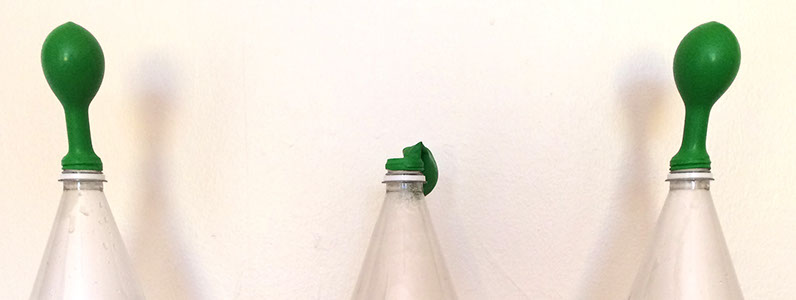
Lab Activity #3: Experimenting with the Variables
The setup you used in Yeast Makes Waste can be repeated in an experiment where you compare the results you get when you change the conditions in each of three bottles. Change only one variable at a time. Use three bottles and keep careful track of what you put into each bottle, and then carefully observe how yeast growth is affected.
Some variations to try:
- different amounts of sugar
- different amounts of yeast
- different amounts of water
- different kinds of sugar (honey, molasses, powdered sugar)
- substitutes for sugar (salt, Splenda)
- liquid substitutes for water (vinegar, hydrogen peroxide)
- different temperatures of water (be careful not to use water that is dangerously hot)
- changing the order of what gets added to the bottle first
- change or maintain the temperature of the water over time (letting it cool off or warm up, for example)
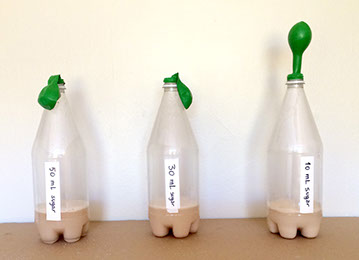 Materials
Materials
- 3 packets of active dry yeast
- sugar
- warm water (105º F – 115º F, or 40.5º C – 46º C)
- 3 empty 1-liter plastic bottles
- A funnel (not necessary, but helpful)
- 3 balloons
Hypothesis
Before you run the experiment comparing the three bottles, write a hypothesis. What do you think will happen in the three different bottles? Why?
Procedure
 Open your lab notebook to take notes (or use this template in Google docs).
Open your lab notebook to take notes (or use this template in Google docs).- From this point, write down your own procedure. The variables you choose to test and how you change those variables will be unique to your experimental setup.
Here’s one example:
- In the first bottle, add 30mL sugar, warm water, and one packet of yeast (as in Lab Activity #1.)
- In the second bottle, use cold water. Keep the volumes of water and sugar the same, so that you will just compare the effects of temperature.
- A third bottle uses warm water like the first one, but without any sugar.
Observations
What did you observe in the three different setups?
Conclusions
Carefully review all the data, notes, and drawings you made in the Session 4 lab activities. Explain what you think accounts for differences observed in the three different setups, using your observations and what you know about baker’s yeast.
What's the difference between findings and speculations? For example, which of these two statements is a finding? A speculation?
The yeast produced more gas to inflate the balloon when the amount of sugar was increased.
vs.
The yeast must really like sugar!
© SERP 2017
This Science Generation unit is currently in development. If you have comments or corrections, SERP would love to hear from you! Thank you.